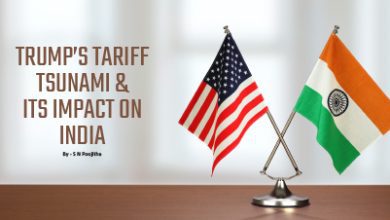JUDICIAL INTERVENTION IN MATTERS OF RELIGIOUS IMPORTANCE IN INDIA

India, a country known for its sizable population and cultural diversity caters to multiple religions. However, many a times the teachings and values of these religions start contradicting each other leading to communal violence. Confidence has been placed on the country’s guardian of democracy i.e., Indian Judiciary in order to safeguard the interest of millions of people residing here.
According to Article 25 of the Indian Constitution, every person has the right to freedom of conscience and right to freely profess, practice and propagate religion subject to public order. However, the rights envisaged under this article tends to violate some of the basic fundamental rights of the citizens.
As we go on analysing the scope of constitutional morality and judicial intervention in India, we’ll also go through some of the landmark judgments that affected the interpretation of existing laws in an exceptional manner.
SCOPE OF JUDICIAL REVIEW WITH REGARDS TO RELIGIOUS PRACTICE/AFFAIRS
Every case is peculiar and each requires an incredibly detailed approach to reach a decision. Nonetheless, for the sake of reaching a unified decision, courts occasionally group cases that are filed on related grounds, which might cause disputes across religions.

One such landmark case that sparked a row throughout the country was that of India Young Lawyers Association v. State of Kerala (Sabarimala Case). In 2018, a writ petition was filed against the practice of exclusion of women from the Sabarimala Temple during their ‘menstruating years’. Some of the questions raised were:
- Does the prohibition on entry violate the fundamental rights of women?
- Can this prohibition be considered as an Essential Practice under Article 25 of Indian Constitution
- Do the Public Worship Rules allowing the custom go against the parent legislation, which disallowed discriminatory practices?
In this 4:1 judgement, ironically the only dissenting judge was a woman, Hon’ble Justice Indu Malhotra. She opined that the unique character of the temple is based on centuries old religious practices and hence, interfering with these shall affect the beliefs and practices of the worshippers. She said that the worshippers of Lord Ayyappa formed a separate religious denomination and the practice of prohibiting the entry of women during their menstruating years forms a part of their essential practice which was protected under constitution. She further appealed judicial restraint in interfering in such religious matters.


After this another such case was filed in the year 2019 by Yasmeen Zubair Ahmad Peerzade and her husband Zuber Ahmad Nazir Ahmad Peerzade before the Hon’ble Court seeking entry of Muslim women into mosques claiming that such restriction violated the basic fundamental rights guaranteed under the Indian Constitution. The petitioners contended that the prohibition is also against the Holy Quran which dispraises such segregation. The Supreme Court held basis for this PIL relying on the Sabarimala judgement and issued notice to the Central Government, the Sunni Waqf Board and the All-India Muslim Personal Law Board. The All-India Muslim Personal Board filed an affidavit that stated, “The extent to which the court can enquire into the issue of a particular practice is an integral part of the religion or religious practice of a particular religious denomination or should that be left exclusively to be determined by the head of the section of the religious group.”
The Supreme Court decided to club the above-mentioned cases to reach to uniform conclusion. Both of these cases are similar yet different as one involves the questions of constitutional rights whereas the other involves the questions of practice and belief under Muslim laws. Such difference can be chaotic and hence, instead of clubbing matters with similar issues some guidelines can be issued to categorize the essential religious practices.
JUDICIARY- AN INTERPRETER OF RELIGION?
The most recent Hijab Controversy in the case of Smt. Resham vs. State of Karnataka that has taken over the news headlines this year raises a very critical question- Can judiciary go on and interpret the religious text? While the answer to that as given by Hon’ble Supreme Court Justices Hemant Gupta and Sudhanshu Dhulia was that they couldn’t, what happens when the Right to Education and the Right to Dress, which together make up a basic fundamental right, are violated in this situation? Another question being raised is whether wearing Hijab satisfy the Doctrine of Essentiality or not.
Several pleas have been filed against the High Court judgement and the matter has now been referred to a larger bench.
MAINTAINIBILITY OF SMT. RAKHI SINGH AND OTHERS VS. STATE OF U.P. (GYANVAPI MOSQUE CASE)
The Varanasi Court passed a 26-page order on 12th September, 2022 holding the suit Smt. Rakhi Singh and Others Vs. State of U.P. maintainable. According to Section 3 of Places of Worship Act, 1991, the conversion of the religious character of any place of worship or any attempt to do so is barred by the court of law. However, a plea was filed by five Hindu women seeking permission to worship the idols within the Gyanvapi Mosque complex citing Section 5, an exception to the Act stating the case of Ayodhya Babri Masjid and any decision or order of proceeding in relation to this matter is exempted from the Act. The court passed the order on the ground that according to the pleadings of the plaintiffs, they were worshipping at the disputed place incessantly since a long time till 1993. After 1993, they were allowed to worship the gods only once in a year under the regulatory of State of Uttar Pradesh. Thus, according to plaintiffs, they worshipped the gods at the disputed place regularly even after 15th August, 1947. Therefore, The Places of Worship (Special Provisions) Act, 1991 does not operate as bar on the suit of the plaintiffs and the suit of plaintiffs is not barred by Section 9 of the Act.
The intervention by judiciary in this case not only increased the faith of devotees in the preservation of their religion but also made a move in healing the injustices of the past.
CONCLUSION:
Judiciary, the most crucial pillar of Indian Constitution and the backbone of democracy has time and again acted as shield protecting the rights and integrity of citizen. However, in order to maintain peace and harmony in an ethnic inclusive country like India, it is imperative to strike a balance between religious beliefs and constitutional morality.







